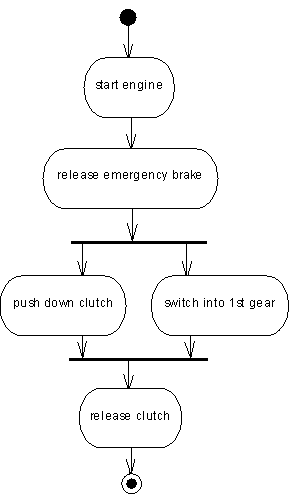

Chapter 5 Building Dynamic Diagrams
An activity diagram is a UML diagram that models the dynamic aspects of a system. It is a simplification of the UML statechart diagram for modeling control flows in computational and organizational processes. It allows you to represent a functional decomposition of a system behavior. An activity diagram provides a complete specification of a behavior and not, like the interaction diagrams, a single possible scenario.
Whereas a statechart diagram focuses on the implementation of operations in which most of the events correspond precisely to the end of the preceding activity, the activity diagram does not differentiate the states, the activities and the events.
The activity diagram gives a simplified representation of a process, showing control flows (called transitions) between actions performed in the system (called activities). These flows represent the internal behavior of a model element (use case, package, classifier or operation) from a start point to several potential end points. The following example of activity diagram shows the flow of activities when starting a car:

At a conceptual level, an activity diagram shows a detailed view of the model, focusing on the operations that are passed among activities. The transitions are triggered by the completion of the operations. Here is a more complex example showing decisions and synchronizations:

You can create several activity diagrams in a package or a model. Each of those diagrams is independent and defines an isolated context in which the integrity of elements can be checked.
An activity diagram is frequently used to graphically describe a use case. Each activity corresponds to an action step and the extension points can be represented as conditional branches.
Beyond object-oriented modeling, activity diagrams are increasingly used to model the business processes of an enterprise. This kind of modeling takes place before the classic UML modeling of an application, and permits the identification of the important processes of the enterprise and the domains of responsibility of each organizational unit within the enterprise.
For more information about business process modeling with PowerDesigner, see the Business Process Model User's Guide.
| Copyright (C) 2006. Sybase Inc. All rights reserved. |

| |